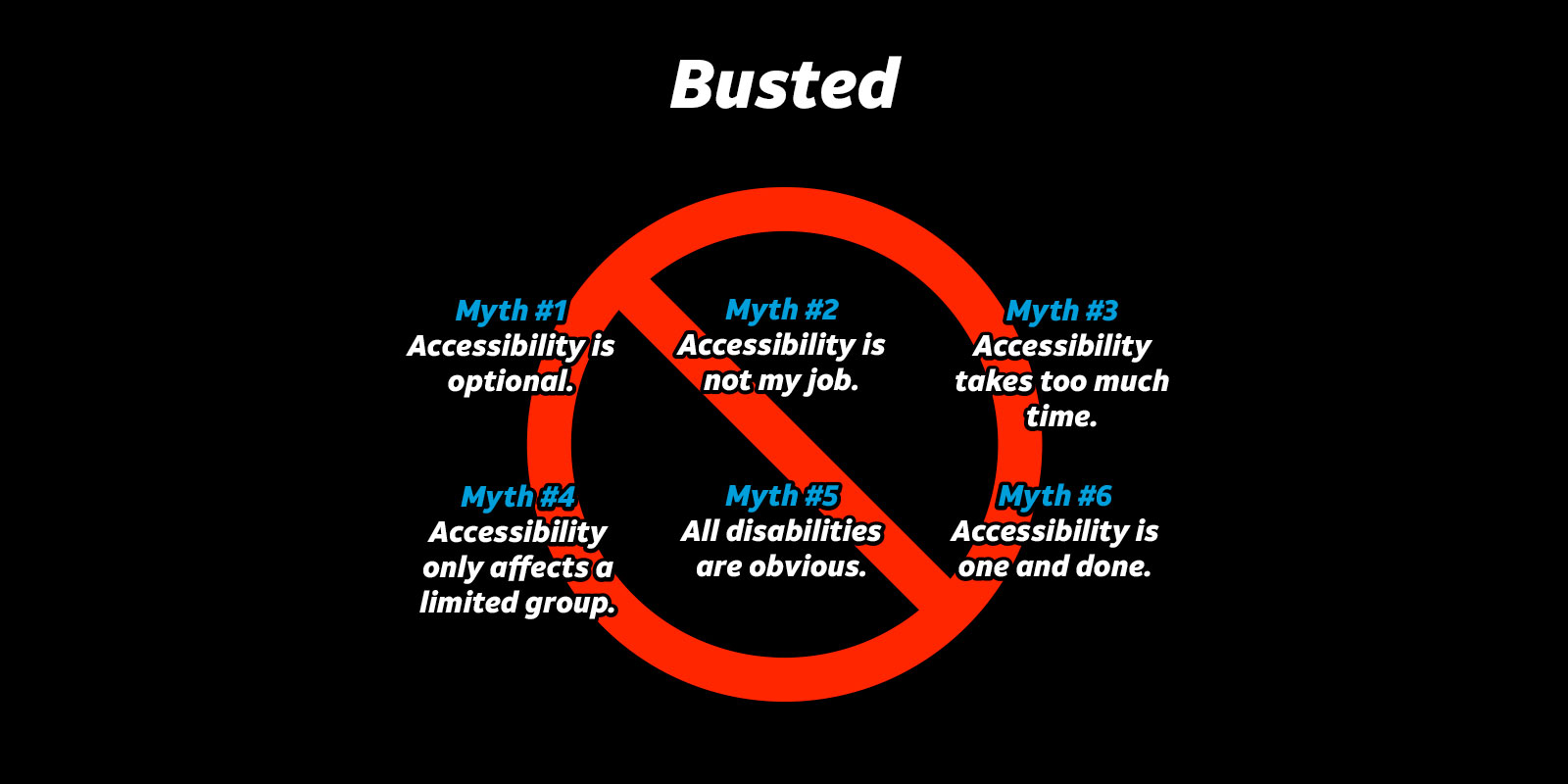Connecting to businesses, organizations, causes and services is more important than ever, which is why digital accessibility can be neither an afterthought nor a “nice to have.” It’s a vital component that helps bring the internet to the 1 in 4 people affected by a disability.
No one knows this better than Ananya Kassahun, Lead Accessibility Solutions Engineer at AT&T and digital accessibility mythbuster. As a member of the AT&T Accessibility team, Ananya routinely challenges assumptions and devises new solutions to make the online world available to all.
Here are some favorite myths that Ananya and her team love to bust.
Myth #1: Accessibility is optional.
Fact: The law would disagree. The Americans with Disabilities Act (ADA) is a civil rights law that requires public accommodations be accessible to people with disabilities. This stretches far beyond putting elevators in shopping malls or a ramp outside a grocery store. The ADA offers no specific mention of digital accessibility. (When the ADA was signed in 1990, the internet was in its infancy.) However, today the internet is considered a public accommodation and should be accessible to everyone.
For Ananya, accessibility eclipses legal requirements.“For me, accessibility is just the right thing to do. As I became friends with people who have disabilities and saw their frustrations, I’ve seen how the digital world is not inclusive. We have work to do and that motivates me.”
Myth #2: Accessibility is not my job.
Fact: Even if you don’t control the design of a building or a website, you can still be part of the solution. For example, make sure you build accessibility into plans and budgets and when writing content for the public, be mindful of readability.
Ananya suggests that accessibility should be a routine consideration when creating a website, “Accessibility should be integrated into web delivery team processes,” she said.
Myth #3: Accessibility takes too much time.
Fact: Sure, it requires a little extra thought and planning, but designing for accessibility upfront is often more time efficient than fixing major issues after launch. By welcoming those with disabilities, we extend our reach and impact, make the world more inclusive – and avoid the risk of legal action.
As Ananya points out, “If you incorporate accessibility from the beginning, it will save your team time, effort and money in the long run.”
Myth #4: Accessibility only affects a limited group.
Fact: Nearly 25 percent of U.S. adults identify as having a disability – that’s about 82 million people, a sizable chunk of the American population. (If you’re in a room with 10 people, at least 2 will likely have a disability.)
“I have more exposure to accessibility than most through my work. But educating people about accessibility is critical – it needs to become part of every student’s curriculum, fostering broad awareness of its importance in areas such as development, design and project management,” Ananya said.
Myth #5: All disabilities are obvious.
Fact: Of all disabilities, 20% are considered “invisible.” An invisible disability could be a physical, mental or neurological condition that you cannot see but still limits or challenges a person’s movements, senses, or comprehension. This means invisible disabilities usually require accommodations that are also less obvious.
“As web content creators, we don’t always know what challenges our users may face. But we need to make sure we’re creating interfaces that work for everyone, regardless of ability,” Ananya said.
Myth #6: Accessibility is one and done.
Fact: Disability represents an incredibly diverse and evolving facet of human life. That means improving accessibility and integrating it into the ways that we work and live should be a top priority.
Ananya said that it’s critically important to remember that accessibility is not a box that you check – it’s an ongoing commitment to create experiences that welcome people of diverse abilities.“Accessibility is not a one-time process or an event – we must stay committed and remain vigilant in our pursuit of an inclusive web.”

